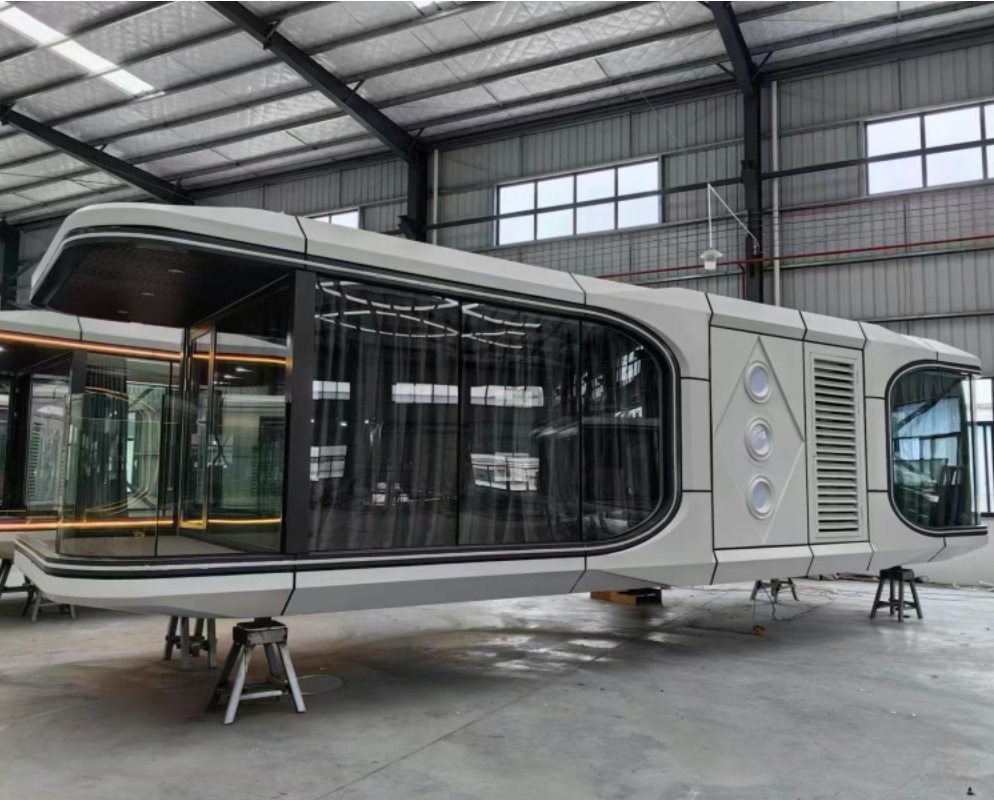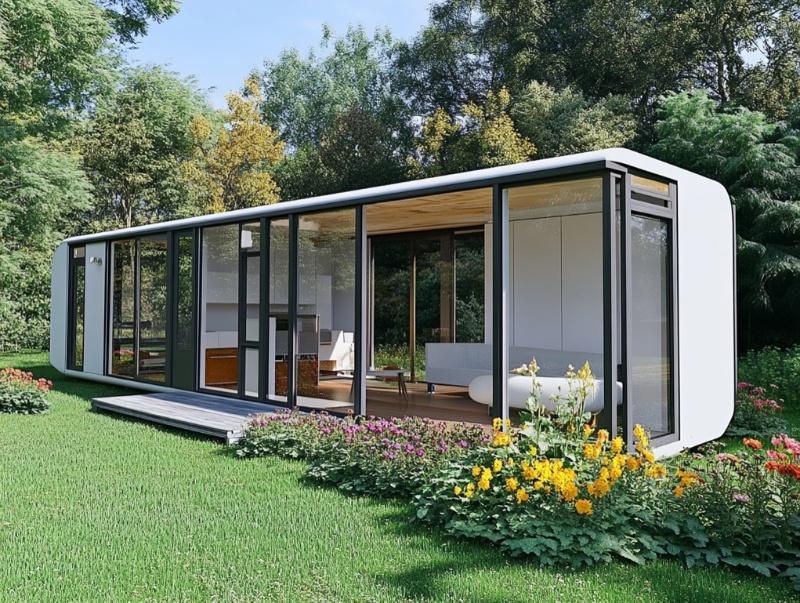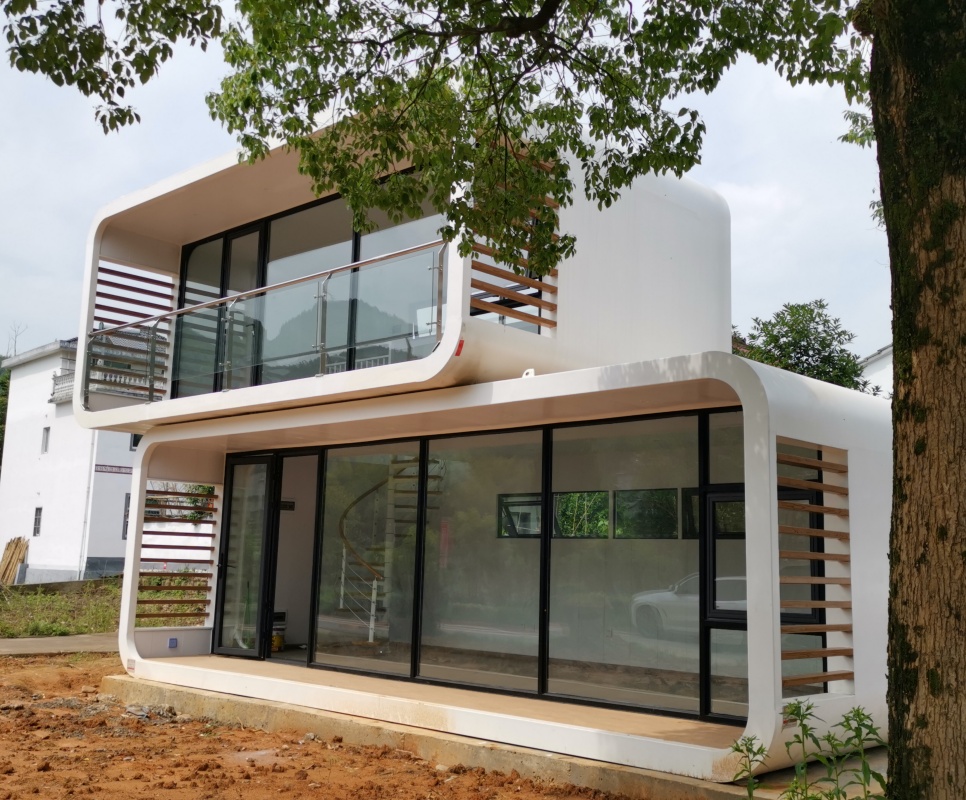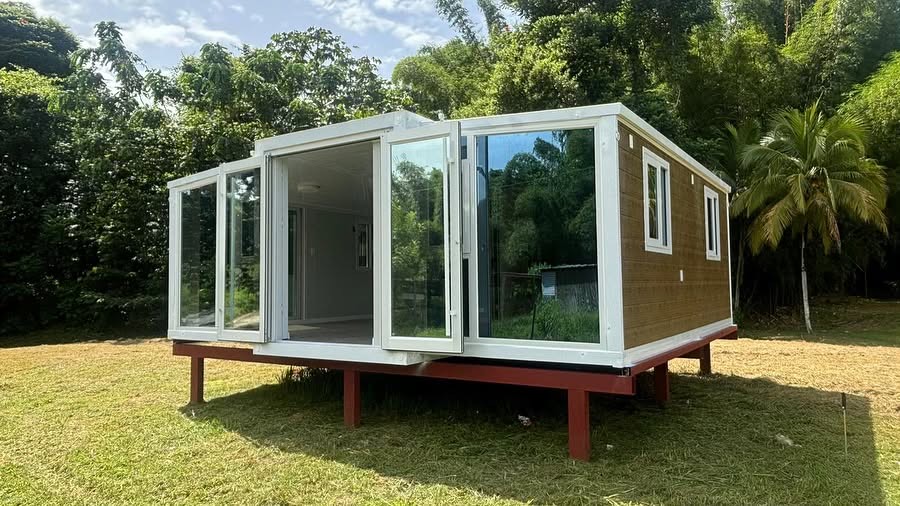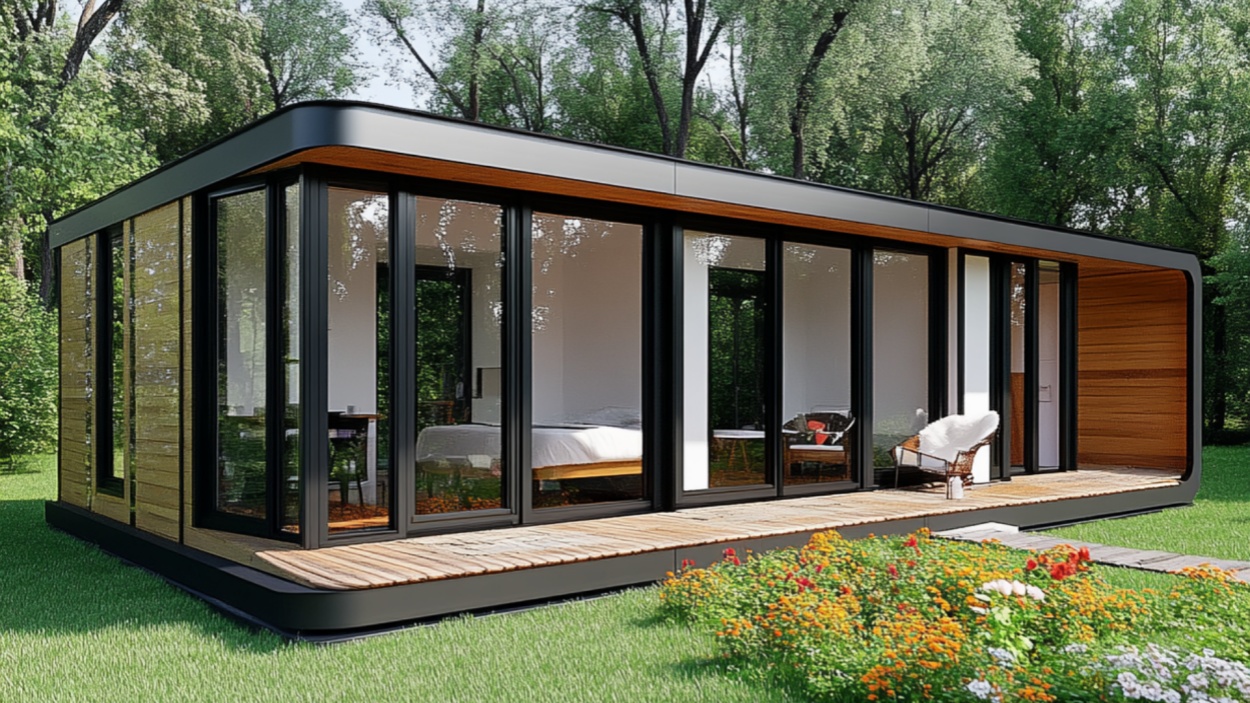Blog
Texas Couple Turns Two Shipping Containers Into Profitable Airbnb Container Home
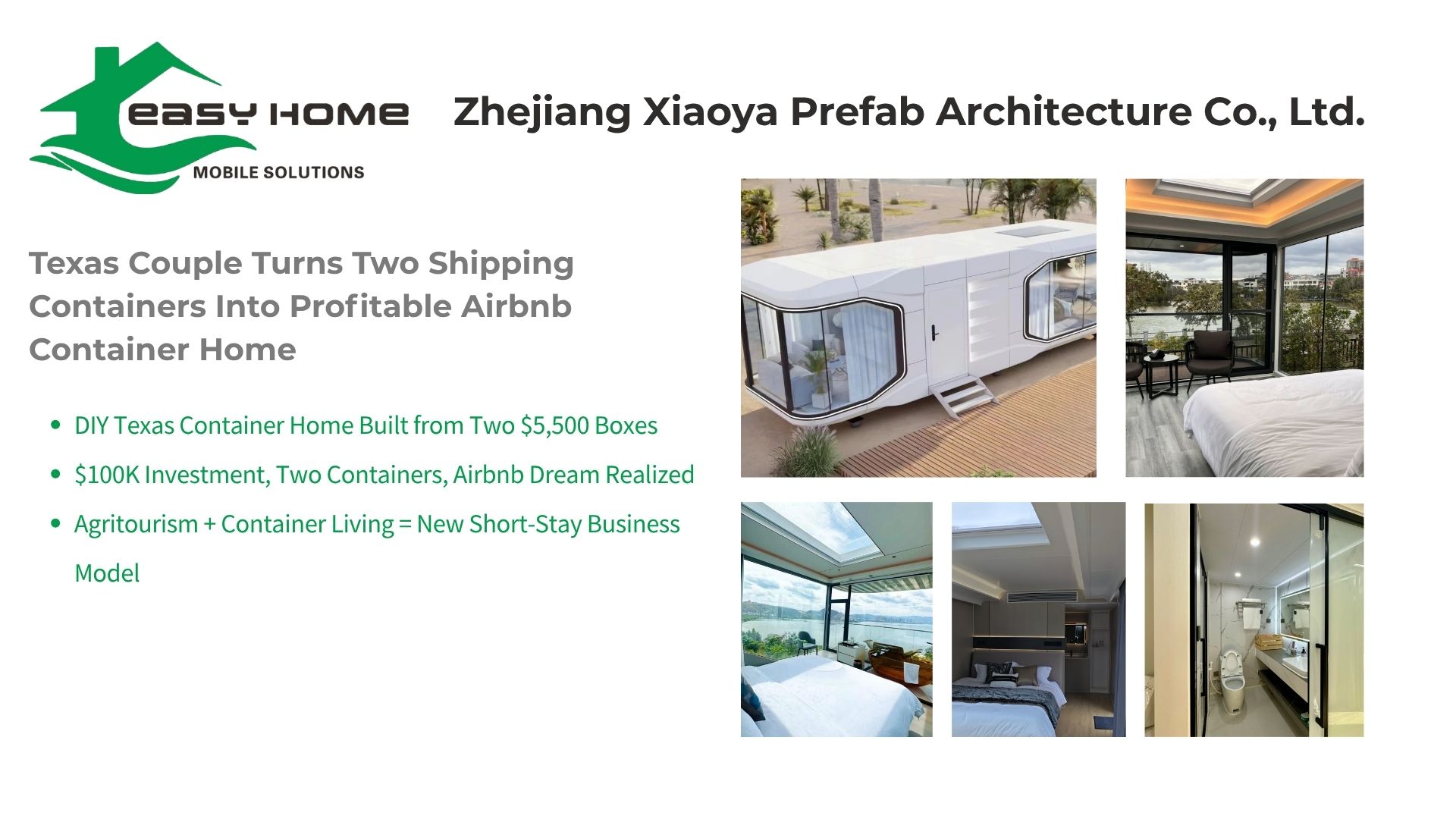
✅ Table of Contents
-
Introduction: From Old Containers to Airbnb Star
-
Project Overview and Investment
-
Construction Process: DIY with Strategic Outsourcing
-
Layout and Living Quality
-
Remote Site Planning: Solar and Agricultural Integration
-
Economic Strategy: Airbnb + Agritourism Model
-
Social & Marketing Impact: Storytelling and Viral Reach
-
Cost Efficiency & Scalability
-
Comparison: Container Airbnb vs Traditional Short‑Term Rentals
-
Challenges and Lessons Learned
-
Replicability: How Others Can Copy the Model
-
Broader Industry Impact and Trends
-
Future Outlook: Modular Container Rentals
-
Conclusion: A Blueprint for the Future of Short‑Term Housing
✅ Main Article (2000+ Words)
1. Introduction: From Old Containers to Airbnb Star
In early 2025, Lexi and Diego Newkirk, a young couple in Texas Hill Country, drew national attention by turning two used shipping containers into a charming Airbnb rental. Their investment—about $100,000—yielded a fully livable 640 sq ft container home on a remote site. Rather than hiring a full team, they self-built the structure while living in an RV, hiring professionals only for plumbing and electrical work. Their story of DIY transformation, rural placement, and Airbnb potential sparked widespread media coverage and provoked interest in replicable short-term rental models built around modular container homes.
2. Project Overview and Investment
-
Containers cost: approximately $5,500 each (total ~$11,000) for two single-use containers
-
Total investment: ~$100,000, covering land, site prep, construction, utilities, and interior finishes
-
Land: They acquired a 12.5-acre remote parcel in Texas Hill Country, after facing neighbor disputes about initial multi-unit plans
-
Timeline: Containers purchased Nov 2023; build started Jan 2024; interior finished by April 2025; moved in shortly thereafter
3. Construction Process: DIY with Strategic Outsourcing
-
DIY majority: Diego handled welding, container stacking, insulation, framing, and general construction, with Lexi coordinating design choices
-
Outsourced plumbing/electrical: To minimize risk, they brought in professionals for critical services, especially difficult plumbing in remote location without water access
-
Living in an RV: They lived onsite in an RV for over a year to save costs and remain close to the build site
-
Site preparation: They cleared the wooded land, created a leveled foundation, and managed utilities like water delivery from 30–45 minutes away due to lack of infrastructure
4. Layout and Living Quality
-
Size: Total of ~640 sq ft, using two shipping containers plus a basement level, thoughtfully laid out for daily life
-
Living spaces:
-
Full-size kitchen with butcher-block countertops, tile backsplashes, appliances
-
Open living area with large sliding glass doors for light and access
-
Bedroom with East-facing window for sunrise views and connection to nature
-
Bathroom(s): One upstairs plus a half‑bath on main floor
-
-
Natural light & orientation: Bedroom window placed to catch sunrise, bathroom faces sunset—a deliberate design choice to align with Lexi’s childhood habit of waking early
-
Interior finish: Pine shiplap paneling, hardwood floors, sliding barn doors, reclaimed wood touches for a cozy rustic-modern aesthetic
5. Remote Site Planning: Solar and Agricultural Integration
-
Solar power: Beginning solar install to reduce off-grid dependency; future plans include full energy self-sufficiency.
-
Agricultural systems: They’re raising poultry (20 chickens) and planning a garden and possibly cows; building towards an integrated Airbnb-agritourism site
-
Wellness retreat vision: Originally intended as group retreat housing, shifted to single container home due to neighbor concerns, but still aligned with agritourism goals
6. Economic Strategy: Airbnb + Agritourism Model
-
Airbnb path: Intend to rent out the container home after living in it for 2–3 years; plan to expand site into rental village later
-
Low fixed cost model: DIY construction and off-grid location minimize overhead; future agritourism can provide additional revenue.
-
Value-add by story: Their journey—RV + DIY + remote build—provides a compelling narrative that enhances marketing and guest intrigue.
7. Social & Marketing Impact: Storytelling and Viral Reach
-
Media coverage: Featured by Business Insider, People.com, Architectural Digest regional spotlights; coverage emphasizes their investment, DIY ethos, and Airbnb potential
-
Social engagement: Lexi shared behind-the-scenes on Instagram and TikTok, amassing near 300,000 followers; videos of site clearing, stacking, plumbing, and sunrise reveal went viral.
-
Narrative power: Their transparent storytelling—live build, remote challenges, cost breakdowns—makes the project highly relatable and shareable.
8. Cost Efficiency & Scalability
-
Budget breakdown:
-
Containers: ~11 K USD
-
Construction, finishes, utilities, site prep: ~90 K USD
-
-
Savings:
-
No mortgage or loan
-
Cheap site living (RV)
-
Self-performed labor
-
-
Scalability:
-
Future container units can be added modularly
-
Community rental concept on their land planned
-
Model replicable for other couples/investors in remote areas
-
9. Comparison: Container Airbnb vs Traditional Short-Term Rentals
| Feature | Texas DIY Container Airbnb | Conventional Vacation Rental |
|---|---|---|
| Construction cost | ~$100 K | $300 K+ |
| Living area | ~640 sq ft | 1,200 sq ft or more |
| Build time | ~15 months | 6–12 months |
| Land & utility needs | Off-grid | Municipally serviced |
| Guest appeal | Authentic, rustic, story-driven | Traditional house vibe |
| Scalability | High (modular containers) | Moderate |
| Marketing narrative | Strong due to transparency & DIY | Often less compelling |
10. Challenges and Lessons Learned
-
Neighbor pushback forced relocation of containers deeper into property and canceling multi-unit plan People.comchron.com+12Business Insider+12Architectural Digest+12.
-
Water access issue: Property lacked municipal water; they needed monthly delivered tanks and creative plumbing solutions People.com.
-
Long build duration: Doing most work themselves stretched timeline (~15 months). Balancing budget vs speed was a trade‑off.
-
Regulatory awareness: Septic, zoning codes, Airbnb permits could vary across regions—future replicators must research local rules.
11. Replicability: How Others Can Copy the Model
-
Land selection: Seek remote or partially remote sites with few restrictions.
-
Container sourcing: Two single-use containers around 20–40 ft each (~$5K–6K).
-
DIY approach: Develop basic welding/carpentry/plumbing skills or partner with a small team.
-
Digital storytelling: Share the process on social media to build following and pre-market rental.
-
Hybrid revenue: Combine short-term rental with agritourism, workshops, events to diversify income.
12. Broader Industry Impact and Trends
-
Consumer‑led container housing: Their DIY method reflects a growing preference for low-cost modular homes over traditional construction.
-
Short-term rental innovation: Airbnb hosts increasingly choosing distinctive designs—container homes meet that demand.
-
Cross-sector appeal: Mixing farming, sustainable energy, modular build, and hospitality creates new hybrid business models.
-
Influence on prefab market: Their visibility can encourage prefab container firms to market direct-to-consumer or host-supported installation packages.
13. Future Outlook: Modular Container Rentals
-
Expansion potential: They could add multiple container units to build a micro-village Airbnb, supported by their land and agritourism setup.
-
Policy evolution: As container homes gain popularity, local regulations may adapt to permit small-scale modular short-term rental sites.
-
Platform support: Airbnb and other booking platforms may highlight container stays as a category, boosting demand.
-
Replication globally: Similar remote DIY container builds could emerge in Western US, Europe, Australia, or developing regions with low-cost land.
14. Conclusion: A Blueprint for the Future of Short‑Term Housing
Lexi and Diego's journey—from purchasing two $5,500 shipping containers to creating a fully functioning 640 sq ft Airbnb-ready home—is more than just a personal project. It’s a replicable blueprint for modular, affordable, and sustainable housing tied to short-term rental success. Their transparent DIY build, solar transition, future farm integration, and compelling storytelling reflect the convergence of modern travel demand, low-cost construction, and experiential lodging. For entrepreneurs, hosts, or DIY builders, this Texas container home demonstrates how vision, resourcefulness, and a strong narrative can transform shipping containers into compelling hospitality venues.
Pls check www.easyprefabhouse.com and send inquiry to dzswb@hzxiaoya.com




